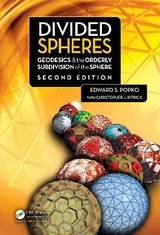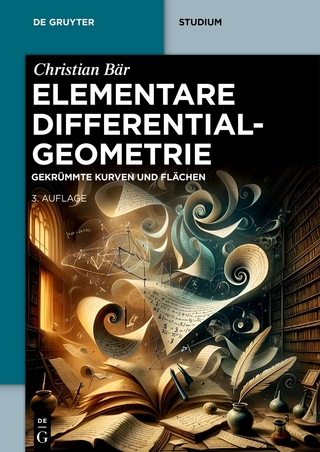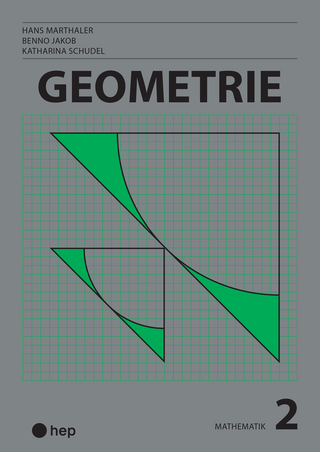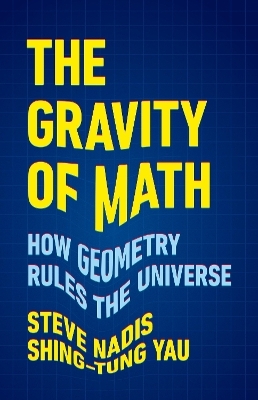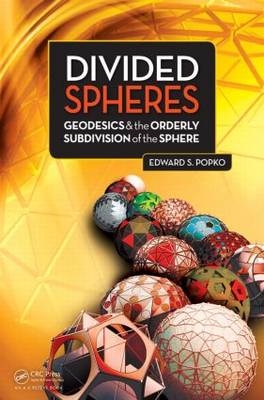
Divided Spheres
A K Peters (Verlag)
978-1-4665-0429-5 (ISBN)
- Titel erscheint in neuer Auflage
- Artikel merken
Divided Spheres
Working with Spheres
Making a Point
An Arbitrary Number
Symmetry and Polyhedral Designs
Spherical Workbenches
Detailed Designs
Other Ways to Use Polyhedra
Summary
Additional Resources
Bucky’s Dome
Synergetic Geometry
Dymaxion Projection
Cahill and Waterman Projections
Vector Equilibrium
Icosa’s
The First Dome
NC State and Skybreak Carolina
Ford Rotunda Dome
Marines in Raleigh
University Circuit
Radomes
Kaiser’s Domes
Union Tank Car
Covering Every Angle
Summary
Additional Resources
Putting Spheres to Work
Tammes Problem
Spherical Viruses
Celestial Catalogs
Sudbury Neutrino Observatory
Climate Models and Weather Prediction
Cartography
Honeycombs for Supercomputers
Fish Farming
Virtual Reality
Modeling Spheres
Dividing Golf Balls
Spherical Throwable Panoramic Camera
Hoberman’s MiniSphere
Rafiki’s Code World
Art and Expression
Additional Resources
Circular Reasoning
Lesser and Great Circles
Geodesic Subdivision
Circle Poles
Arc and Chord Factors
Where Are We?
Altitude-Azimuth Coordinates
Latitude and Longitude Coordinates
Spherical Trips
Loxodromes
Separation Angle
Latitude Sailing
Longitude
Spherical Coordinates
Cartesian Coordinates
ρ, φ, λ Coordinates
Spherical Polygons
Excess and Defect
Summary
Additional Resources
Distributing Points
Covering
Packing
Volume
Summary
Additional Resources
Polyhedral Frameworks
What Is a Polyhedron?
Platonic Solids
Symmetry
Archimedean Solids
Additional Resources
Golf Ball Dimples
Icosahedral Balls
Octahedral Balls
Tetrahedral Balls
Bilateral Symmetry
Subdivided Areas
Dimple Graphics
Summary
Additional Resources
Subdivision Schemas
Geodesic Notation
Triangulation Number
Frequency and Harmonics
Grid Symmetry
Class I: Alternates and Ford
Class II: Triacon
Class III: Skew
Covering the Whole Sphere
Additional Resources
Comparing Results
Kissing-Touching
Sameness or Nearly So
Triangle Area
Face Acuteness
Euler Lines
Parts and T . 257
Convex Hull
Spherical Caps
Stereograms
Face Orientation
King Icosa
Summary
Additional Resources
Computer-Aided Design
A Short History
CATIA
Octet Truss Connector
Spherical Design
Three Class II Triacon Designs
Panel Sphere
Class II Strut Sphere
Class II Parabolic Stellations
Class I Ford Shell
31 Great Circles
Class III Skew
Additional Resources
Advanced CAD Techniques
Reference Models
An Architectural Example
Spherical Reference Models
Prepackaged Reference and Assembly Models
Local Axis Systems
Assembly Review
Design-in-Context
Associative Geometry
Design-in-Context versus Constraints
Mirrored Enantiomorphs
Power Copy
Power Copy Prototype
Macros
Publication
Data Structures
CAD Alternatives: Stella and Antiprism
Antiprism
Summary
Additional Resources
Spherical Trigonometry
Basic Trigonometric Functions
The Core Theorems
Law of Cosines
Law of Sines
Right Triangles
Napier’s Rule
Using Napier’s Rule on Oblique Triangles
Polar Triangles
Additional Resources
Stereographic Projection
Points on a Sphere
Stereographic Properties
A History of Diverse Uses
The Astrolabe
Crystallography and Geology
Cartography
Projection Methods
Great Circles
Lesser Circles
Wulff Net
Polyhedra Stereographics
Polyhedra as Crystals
Metrics and Interpretation
Projecting Polyhedra
Octahedron
Tetrahedron
Geodesic Stereographics
Spherical Icosahedron
Summary
Additional Resources
Geodesic Math
Class I: Alternates and Fords
Class II: Triacon
Class III: Skew
Characteristics of Triangles
Storing Grid Points
Additional Resources
Schema Coordinates
Coordinates for Class I: Alternates and Ford
Coordinates for Class II: Triacon
Coordinates for Class III: Skew
Coordinate Rotations
Rotation Concepts
Direction and Sequences
Simple Rotations
Reflections
Antipodal Points
Compound Rotations
Rotation around an Arbitrary Axis
Polyhedra and Class Rotation Sequences
Icosahedron Classes I and III
Icosahedron Class
Octahedron Classes I and III
Octahedron Class
Tetrahedron Classes I and III
Tetrahedron Class
Dodecahedron Class
Cube Class
Implementing Rotations
Using Matrices
Rotation Algorithms
An Example
Summary
Additional Resources
| Verlagsort | Natick |
|---|---|
| Sprache | englisch |
| Maße | 191 x 235 mm |
| Gewicht | 1247 g |
| Themenwelt | Mathematik / Informatik ► Mathematik ► Geometrie / Topologie |
| Technik ► Umwelttechnik / Biotechnologie | |
| ISBN-10 | 1-4665-0429-3 / 1466504293 |
| ISBN-13 | 978-1-4665-0429-5 / 9781466504295 |
| Zustand | Neuware |
| Informationen gemäß Produktsicherheitsverordnung (GPSR) | |
| Haben Sie eine Frage zum Produkt? |
aus dem Bereich
